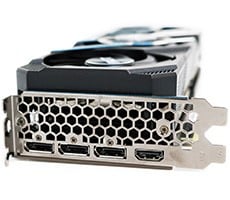Socket 939 Motherboard Roundup: ABIT, MSI, Gigabyte
Although the BIOS screen shots below may look similar to the other one featured in this roundup, there is one notable difference. The MSI K8T Neo2-FIR is equipped with an AMIBIOS (American Megatrends Inc.), rather than the much more popular Phoenix / Award BIOS powering most of the motherboards available today.
|
As expected, the standard BIOS menus don't have any new and exciting features to speak of. The options and toggles to control all of the K8T's integrated peripherals are available, but there was nothing to get too excited about until we accessed the Cell Menu. Just like the K8N Neo2 Platinum, all of the K8T Neo2-FIR's overclocking tools are listed in the Cell Menu.
|
The Cell Menu is where users will find all of the K8T's various overclocking options. Using the Cell Menu, users can alter their processor's multiplier and select any processor bus speed between 200MHz and 280MHz, in 1MHz increments. The AGP bus speed can be set to "Auto" or locked at 66MHz or 75.4MHz. The HT link speed can be set to 200MHz, 400MHz, 600MHz, 800MHz, or 1GHz. Processor, AGP, memory and HyperTransport voltages are also user configurable. The CPU voltage can be increased by up to 15% (1.725v), AGP voltages range from 1.55v to 1.85v (.05v increments), and the HyperTransport voltage can be increased to a maximum of 1.38v. Memory voltages can also be altered, with a range of 2.55v to 2.85v available.







